#3 July 1863
Photo



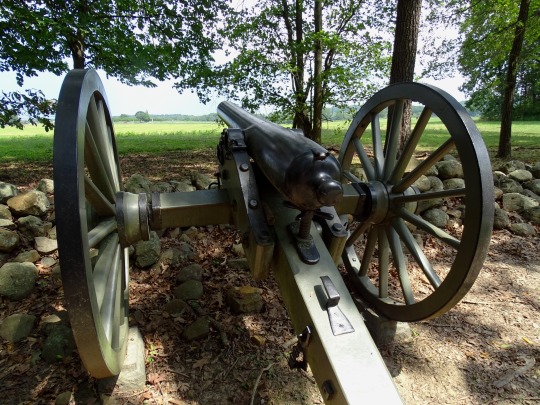
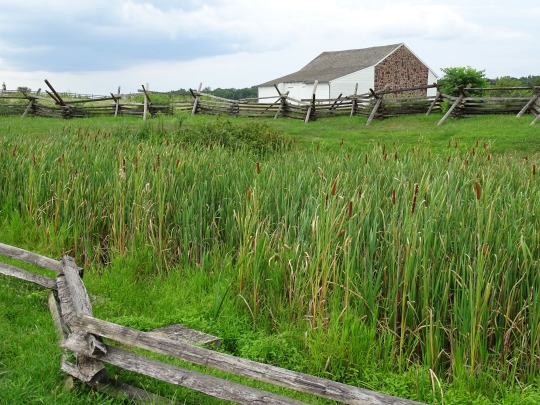


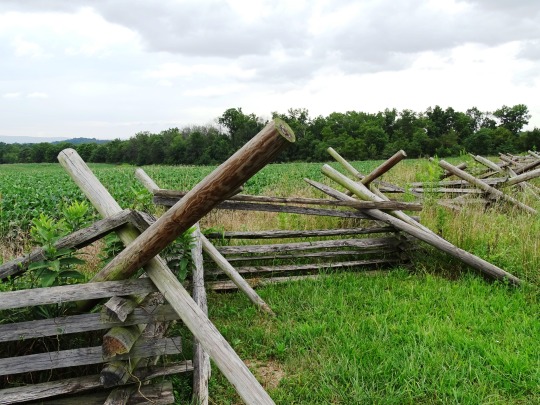


American Civil War: The final day of the Battle of Gettysburg culminated with Pickett's Charge on July 3, 1863.
#McPherson's barn#Devil's Den#Chambersburg Pike#Little Round Top#USA#Gettysburg National Military Park#Pennsylvania#travel#summer 2019#American Civil War#original photography#US Civil War#Battle of Gettysburg#final day#Pickett's Charge#3 July 1863#160th anniversary#US history#vacation#landscape#countryside#flora#nature#woods#cannon#landmark#free admission#tourist attraction
37 notes
·
View notes
Link
On July 3, 1863, Confederate forces led by General Robert E. Lee attacked Union forces at the Battle of Gettysburg. Among them was the 28th Virginia Infantry Regiment. On the other side, Union defenders included the 1st Minnesota Infantry Regiment.
When the dust cleared, Minnesota had control of the 28th Virginia Infantry Regiment’s “battle flag,” that Confederate rebel flag we all know and properly hate today. Now, 160 years later, the two states are still fighting over that darn flag.
The Confederate flag is a participation trophy for losers.
270 notes
·
View notes
Text

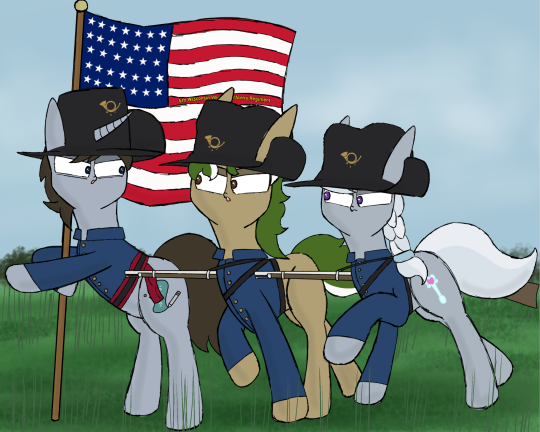








The Battle of Gettysburg 160th Anniversary
"In July 1863
A nation torn in tragedy
A trick of fate, two great armies merge
Gods of war at Gettysburg
Devastation lies ahead
50, 000 bodies litter the land
Hell rages three full days
The reaper sows, there's the devil to pay"
- The Devil to Pay, Iced Earth
*************************************
The Battle of Gettysburg:
Day 1
Day 2
Day 3
----------------------------------------
The battle of Gettysburg is more than just a single battle. It was a series of engagements spanning three days. The events that occured during that fight could not be all told in ten art pieces alone. Stories such as the charge of the 1st Minnesota, the 137th New York's defense of the Union right flank, the fight at East Cavalry Field, and many other stories that happened during those three days were, sadly, not told here. However, it is my hope that this gave some awareness to the battle and the sacrifices made by the soldies who fought that day.
Special thanks to all those who were featured!
@temper-temper
@randomgurustuffs
@askpokeeosin
@whirlwindflux
@flashmod
@a-spoonful-o-generosity
@thedumbguywithaheart43
@bexdrey
@techbro-arts
@duran301
@fetch26291
@daintydoilypon
@thelunararmy
@ask-space-race
@f0rever-autumn
@hoofclid
@nox-lunarwing
@ama-artistic
@nopony-ask-mclovin
@asktwilighteclipse
@ask-healthy-light
#Art#MLP#My Little Pony#History#Gettysburg#Battle of Gettysburg#Gettysburg 160#Gettysburg 160th Anniversary
34 notes
·
View notes
Text


It’s in our blood. General George Patton’s grandfather served in the 22nd Virginia Infantry of the Confederate States of America, rising from captain to colonel of the regiment. As lieutenant colonel he was wounded in the shoulder at the Battle of Scary Creek in present-day West Virginia on July 17, 1861. He returned but was again wounded at Giles Court House on May 10, 1862; this time in the stomach. At the Battle of Opequon, also known as the Third Battle of Winchester, he was mortally wounded and died September 25, 1864. He is interred at the Stonewall Cemetery in Winchester. The Confederate Congress had promoted Colonel Patton to brigadier general; however, at the time, he had already died of battle wounds, so that promotion was never official.
He had several brothers who also fought for the Confederacy, and one, Lt. Col. Waller T. Patton, another VMI graduate, was mortally wounded at Gettysburg on July 3, 1863.
I was told a story about the Patton family recovering Waller’s body from Gettysburg post-war during reconstruction when wearing confederate uniforms was outlawed. The body arrived in the middle of the night at the train station, and was met with men with torches and overcoats. The men then removed their coats to reveal confederate uniforms. When digging the adjacent grave for his brother under lamp light, someone mistakenly chopped a hole in Goorge’s casket revealing his face. When asked how the face looked, the man said “just as I remember him.”
15 notes
·
View notes
Text
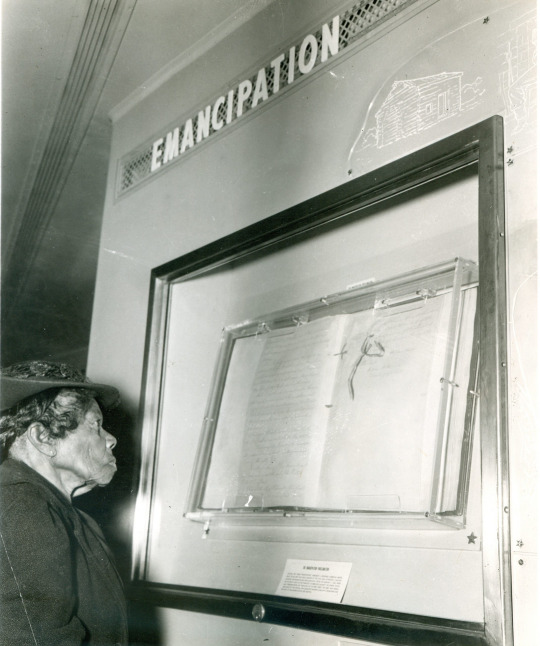
Former slave Sally Fickland views the Emancipation Proclamation on the Freedom Train, 1947.
WE HONOR JUNETEENTH
#OTD 2021, Juneteenth named a federal holiday
By Miriam Kleiman, Public Affairs
On June 19, 1865, 2½ years after the Emancipation Proclamation, Maj. Gen. Gordon Granger issued General Order #3, informing the people of Texas that all enslaved people were now free. Texans were the last Americans to learn this.
Visit the National Archives in DC this weekend (June 18-20) to see General Order #3 and the Emancipation Proclamation! Details here.
This day became known Juneteenth, a combination of June and 19th, aka Freedom Day or Emancipation Day, it’s this country's oldest known celebration commemorating the end of slavery. On June 17, 2021, President Joe Biden signed a bill into law establishing Juneteenth as a federal holiday.

Excerpt from General Order #3:
The people of Texas are informed that, in accordance with a proclamation from the Executive of the United States, all slaves are free. This involves an absolute equality of personal rights and rights of property between former masters and slaves, and the connection heretofore existing between them becomes that between employer and hired labor.
Featured Document Displays June 18-20, 2022 ONLY
National Archives, DC:
‘Juneteenth’ Gen. Order # 3 - West Rotunda Gallery,
The original Emancipation Proclamation - East Rotunda Gallery
President Lincoln issued the Emancipation Proclamation on January 1, 1863, as the nation approached the third year of the Civil War and declared “that all persons held as slaves” within the rebellious states “are, and henceforward shall be free."

Pulitzer Prize-winning historian Annette Gordon-Reed’s NARA book talk online.
About that promised Emancipation...
Emancipation wasn't a singular event. There were many emancipation days as enslaved people obtained their freedom in the decades spanning from July 4, 1776 through the Civil War.
Despite its expansive wording, the Emancipation Proclamation was limited. The freedom it promised was dependent upon a Union victory in the war. It also only applied in 10 Confederate states, leaving more than half a million men, women, and children in bondage in parts of the Confederacy already under Northern control and in the loyal border states. Learn more about this landmark document here.
More online:
Press release: National Archives To Display Emancipation Proclamation and ‘Juneteenth’ General Order No. 3, June 18–20
National Archives Safeguards Original ‘Juneteenth’ General Order.”
Archives Staffers “Find” Original Juneteenth Order!
The “EP” at the National Archives, Pieces of History
#juneteenth#civil rights#blm#black history#civil war#freedom#no justice no peace#african american history#black lives matter#juneteenth celebration#otd
264 notes
·
View notes
Text
The lost cause of British conservatism is like the lost cause of the US Confederacy. Myth-making and evasion dominate the writing of Conservative intellectuals just as they dominated the self-justification of the defeated American south.
To Confederate sympathisers the south did not lose because it was defending slavery. The southern states were a victim of an attack on their rights by the north, a position still maintained today by Nikki Haley and other right-wing politicians seeking southern votes.
Equally, today’s Conservative writers insist that they are not going down to a potentially catastrophic defeat because Conservatism betrayed the UK by imposing Brexit, Boris Johnson and Liz Truss on a country in no condition to take any of them.
No, the right is losing because it is not right-wing enough.
It feels mean to pick out examples when there is so much special pleading to choose from. But as readers need evidence, here is the pro-Brexit historian Robert Tombs (an old friend of this Substack).
Writing in the Telegraph Tombs says that the Tories “have lost much of their middle-class vote and their working class vote too”. So they have. But Tombs hastens to add, not because of Brexit being a disaster, or Johnson turning Downing Street into a pub, or unfunded tax cuts for the wealthy but because along the way the Conservatives embraced policies that Tombs and the Telegraph don’t like.
“High taxes, mass immigration, projects like HS2 and hasty attempts to impose net zero”.
There is no need for right-wingers to ask hard questions of themselves. They weren’t wrong. They were betrayed by cowardly politicians and the civil service.
Henry Hill, the deputy editor of Conservative Home, who was writing in the Guardian this week, exemplifies the determination of modern Conservatives to avoid a reckoning with what they have done.
He asks a good question: how did the Tories go from a landslide victory in 2019 to what looks like being a landslide defeat in 2024. But once again he does not blame Brexit, or Boris Johnson, or Liz Truss or any policy or politician right-wingers endorsed but too many immigrants and too many tax rises.
The modern right-winger is always the victim and never the aggressor. He does not harm others; others harm him.
The great southern novelist William Faulkner wrote in the 1940s about how we use fantasy to blot out history.
To men of his generation the worst moment in the history of the south was on the afternoon of July 3, 1863, during the Battle of Gettysburg. The Confederates were still in the civil war. But then the southern high command ordered Major General Thomas Pickett to lead his men in an insane charge uphill against entrenched Union positions.
The battle was lost, and eventually the war was lost too.
Faulkner wrote
“For every Southern boy fourteen years old, not once but whenever he wants it, there is the instant when it's still not yet two o'clock on that July afternoon in 1863, the brigades are in position behind the rail fence, the guns are laid and ready in the woods and the furled flags are already loosened to break out and Pickett himself with his long oiled ringlets and his hat in one hand probably and his sword in the other looking up the hill waiting for Longstreet to give the word and it's all in the balance, it hasn't happened yet, it hasn't even begun yet, it not only hasn't begun yet but there is still time for it not to begin against that position and those circumstances.”
For every Tory boy today, there is an instant when it is not yet ten o’clock on that October morning in 2022. Kwasi Kwarteng has not delivered his mini budget. It hasn’t happened yet, it hasn't even begun yet, it not only hasn't begun yet but there is still time for it not to begin …
It is easy to mock. And just because it is easy does not mean one should do it. But once you have stopped laughing at them, it’s worth noting that the future of conservatism is one of perpetual motion to the right.
If American conservatism is dominated by the Donald Trump personality cult, British conservatism is dominated by the Brexit cargo cult.
You cannot say that Brexit has failed and remain a Conservative. It is heresy. Taboo. Question Brexit and the shamans of the Tory tribe will curse you, and its warriors will pick up their clubs and spears and drive you from the warmth of the campfire into the cold, darkness of the real world.
In this know-nothing atmosphere I can see four reasons why Tory radicalisation is inevitable
1/ The power of fantasy
youtube
The inability of Conservatives to face what they have done delivers the first shove to the right. They believe that a public sector conspiracy explains their lamentable record in government rather than their own ideologies.
Liz Truss (see video above) and Kwasi Kwarteng, forced out the permanent secretary to the Treasury and sidelined the Bank of England and the Office for Budget Responsibility before they crashed the economy. They now pretend that the fault lies with the institutions they ignored, not themselves.
British deference, our awful class inferiority, means that we assume that establishment politicians are moderate and respectable. But Rishi Sunak has chosen to waste his time trying to enact a spiteful and unworkable policy of deporting asylum seekers to Rwanda. He is pushing his party to the extreme.
You cannot say that the British radical right is being constrained or having its ideas contested by a sensible centre-right.
2/ The perverse triumph of progressivism
And yet if you take conservatives on their own terms, some of what they say is true. They are genuinely furious that, despite 14 years of Conservative rule, taxes and immigration rates are at record highs. And they genuinely fear cultural change.
Yet, rather than confront their fears, Conservatives are engaged in aimless rage.
Taxes are at a record high because of covid, whose costs will pass eventually, and because of an ageing population, whose cost will only rise.
Conservatives might find the money for tax cuts by reducing the old-age pension or by demanding more money from the elderly for health care. Because the old vote Conservative, they do neither.
Immigration covers the UK’s acute labour shortages. Conservative writers complain but offer no alternatives to bringing in new workers.
As for woke culture, anyone who works in the arts, academia, the charitable sector and other liberal institutions knows that there has been a cultural revolution. No one who has witnessed the attacks on gender-critical feminism can doubt that it can be, like all revolutions, viciously authoritarian.
But in a free society there is very little a government can do about, for instance, liberal newspaper and book publishers censoring feminists. Cultural battles are largely fought outside politics. Politicians can change laws but they cannot force people to think the way Conservatives want them to think, and impotence adds to Tory anger.
Rage without purpose drives you to extremes. There is no need to stop and work out practical policies. You are free to revel in the purity of your anger.
3/ The media-political complex
In our interview Tim Bale described how new media encouraged extremism. The right has given the UK GB News our own version of Fox News, even though we all assumed the law prevented politically biased broadcasting.
Tory MPs have become TV presenters producing sound bites for social media. Extreme postures and simple solutions attract attention. Demagoguery has now become the smart career move on the right. If a Tory gets thrown out of Parliament, he or she can work as a loudmouth in the media until fresh political openings arise.
As Tim Bale said, new media…
“…gave opportunities to Conservative MPs who otherwise would've been fairly unknown. Conservative voices who probably would've been shouting into the void now make a name for themselves, much faster and much more frequently than would've been the case. It’s made the party much more difficult to manage. And it's also put pressure on the leadership to move to the radical right.”
4/ The wave of the future
Everywhere in Europe and the Americas radical right politicians and parties are driving out the centre-right politicians.
The UK seems to be about to elect a moderate centre-left government. But the forces that are driving conservative politics rightwards – mass immigration, the rise of authoritarian liberalism, new media technologies – will continue to drive the British conservatives rightwards too.
If Labour fails, they will be waiting to take over
6 notes
·
View notes
Text
#OTD in 1863 – The Irish Brigade at Gettysburg – Pickett's Charge, Day 3 | Pickett's Charge had begun and the 69th Pennsylvania would suffer dreadful losses.
On 3 July 1863, as the Confederates of George Pickett’s Division closed on the stone wall near the top of Cemetery Ridge at Gettysburg, they saw a green flag rising up from behind it surrounded by 200 men in blue springing to their feet to open fire on the charging Confederates. The green battle flag was emblazoned with the number “69” but this was not New York’s Fighting 69th, it was the 69th…
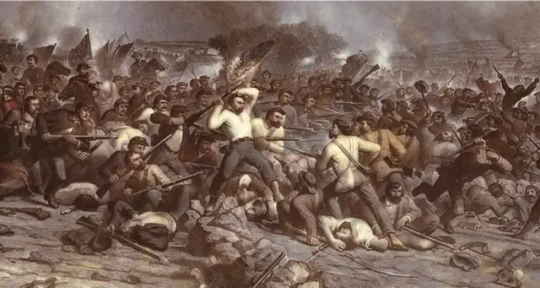
View On WordPress
#American Civil War#Battle of Gettysburg#History#History of Ireland#Ireland#Irish Brigade#Irish History#Today in Irish History#United States
16 notes
·
View notes
Text

Lucius Henry Holsey was born on July 3, 1842, near Columbus, Georgia. His mother Louisa was enslaved. His father James Holsey owned the plantation. Lucius was born enslaved.
He was sold to his cousin T. L. Wynn and then to Richard Malcolm Johnston, an academic. According to the New Georgia Encyclopedia, Holsey chose to be sold to Johnston. According to American National Biography, Holsey taught himself to read and write and was not educated; according to the New Georgia Encyclopedia, some of Holsey's relatives taught him to read. He remained enslaved by the Johnston family until slavery was abolished.
Holsey converted to Methodism after attending plantation missionary revivals led by Henry McNeal Turner. He was given a preaching license as a Methodist minister in February 1868 and held various positions as a minister until he was appointed a bishop of the Colored Methodist Episcopal Church (now the Christian Methodist Episcopal Church) in March 1873. The Colored Methodist Episcopal Church was a division of the Methodist Episcopal Church, South, created for African people in 1870 during the Reconstruction era.
As a bishop, Holsey founded churches, wrote and revised religious texts including the church's Book of Discipline, and participated in church governance. He also edited a church newspaper, The Gospel Trumpet. He raised funds in support of educational institutions including Paine College; Lane College; Holsey Industrial Institute in Cordele, Georgia; and the Helen B. Cobb Institute for Girls in Barnesville, Georgia.
Initially an advocate for racial cooperation, Holsey endorsed Black separatism around the turn of the 20th century after Sam Hose was lynched in 1899.
In 1898, Holsey published Autobiography, Sermons, Addresses, and Essays with Franklin Printing & Publishing Company in Atlanta, Georgia. It went through three editions.
Holsey married Harriett Turner on November 8, 1862, or 1863. Harriett was 15 at the time. Her name is also given as Harriett A. Pearce or Harriet A. Turner. Harriett and Lucius met in Hancock County, Georgia, while classes at the University of Georgia, where Johnston taught, were canceled due to the Civil War. Lucius died on August 3, 1920, at his home on Auburn Avenue in Atlanta
#african#afrakan#kemetic dreams#africans#afrakans#brownskin#brown skin#auburn avenue#harriett turner#hancock county#columbus ga#columbus#Lucius Henry Holsey
15 notes
·
View notes
Text
The Canonical Five: Mary Jane Kelly

April 02, 2023
Mary Jane Kelly is who is known as Jack the Ripper’s 5th and final canonical five victim, however, there is much less information known about her upbringing compared to the other four women.
It is believed by many that the information we do know about Mary Kelly is embellished, with her having fabricated details that are known about her early life.
The man Mary Kelly had most recently been living with before her murder was named Joseph Barnett, and he later claimed Mary had told him she was born in Limerick, Ireland around 1863 and her family had moved to Wales when she was a child.
Supposedly Mary Kelly had told an acquaintance that she had been disowned by her parents, but she was close with her sister. It was said from Joseph and Mary’s landlady that she had come from a somewhat wealthy, good family. Joseph also claimed Mary confirmed she had seven brothers and at least one sister.
Mary’s landlord, a man named John McCarthy claimed she had received mail from Ireland, but not regularly. It was also believed that Mary was illiterate, as Joseph claimed she would ask him to read her the newspaper reports of the Jack the Ripper killings.
Though it’s been reported Mary had blonde or red hair, she went by the nickname of “Black Mary” suggesting she actually had quite dark hair. She also had blue eyes and some claimed to have known her as “Fair Emma.” It is estimated that Mary stood at about 5′7″ tall, and some said she was quite attractive.
On November 10, 1888, the day after her murder,
the Daily Telegraph
described Mary as “tall, slim, fair of fresh complexion, and of attractive appearance.”
In 1879, at around the age of 16, Mary married a coal miner named Davis or Davies who ended up getting killed 2-3 years later in a mining explosion. After this, Mary lived with a cousin in Cardiff, and this is where it is believed she started being involved in sex work.
In 1884, Mary left Cardiff and moved to London, where she worked as a domestic servant while lodging in Crispin Street, Spitalfields. In 1885, it’s believed she moved to the district of Fitzrovia.
Mary eventually began working in a high class brothel in the West End of London, becoming one of the most popular girls. She did quite well for herself and bought expensive clothes and hired a carriage at this time. Supposedly Mary had met a client named Francis Craig who took her to France, but she returned to London two weeks later, not having liked the France life.
It is believed that in 1885 Mary Kelly began drinking heavily. She moved around quite a bit lodging with different women and different men around this time.
It was on April 8, 1887, that Mary Kelly met Joseph Barnett, with the pair agreeing to live with each other after only knowing one another for a day. They lived in George Street, and soon a place called Little Paternoster Row, but were evicted for not paying rent and of drunk and disorderly conduct.
In early 1888, the two moved into 13 Miller’s Court, a single room a the back of 26 Dorset Street, Spitalfields. Mary had lost her key to the door, so she would bolt and unbolt the door from outside, putting her hand through a broken window by the door. A neighbour claimed Mary had broken the window when she was drunk, and a man’s coat often was used to act as a curtain.
It was said by Mary’s friend Lizzie Albrook, that Mary was sick of how she was living in 1888 and wanted to go back to Ireland. Her landlord said that she was a quiet woman when she was sober but very noisy when drunk. When Mary was drunk she often could be abusive to people, and was nicknamed “Dark Mary.”
Joseph lost his job as a fish porter in July 1888 due to committing theft, and because of this, Mary turned back to sex work. Mary would often let other sex workers sleep in their room at night when it was really cold because she did not have it in her to refuse them shelter.
It is believed that on October 30, 1888, Joseph moved out as him and Mary got into a fight about a sex worker named Julia sharing their room with them. Between November 1 and November 8, Joseph visited Mary almost everyday, sometimes giving her money.
The last time Joseph visited Mary was between 7-8 pm on November 8, 1888. Joseph claimed Mary was with her friend, Maria Harvey and that he did not stay long. He also apologized to Mary for not having any money to give. It is reported that both Joseph and Maria left Miller’s Court at the same time.
Joseph went back to his lodging house and played cards, falling asleep around 12:30 am. Before Joseph left Mary that night, her friend Lizzie Albrook also visited. Lizzie claimed Mary was sober.
In the evening, Mary reportedly had one drink in the Ten Bells public house with a woman named Elizabeth Foster. Later on, Mary was seen drinking with two other people at the Horn of Plenty pub on Dorset Street.
A sex worker named Mary Ann Cox, who also was a resident of Miller’s Court claimed to have seen Mary going home drunk with a stout, ginger haired man, around the age of 36 at 11:45 pm. The man was wearing a black bowler felt hat, had a thick moustache, had blotches on his face and was holding a can of beer.
Mary Ann actually had spoken to Mary Kelly, they both said goodnight. Mary Kelly then entered the room with the man. Mary Ann heard her singing the song, “A Violet from Mother’s Grave.” She was still singing when Mary Ann left her place at midnight, and when she returned an hour later around 1 am.
Elizabeth Prater lived in the room directly above Mary Kelly. She reportedly went to bed at 1:30 am, and the singing had stopped.
A man named George Hutchinson who knew Mary, claimed he had met up with her around 2 am on November 9, 1888 on Flower and Dean Street. Mary had asked George for a loan of sixpence, though he claimed to be broke. George said Mary Kelly walked toward the direction Thrawl Street when she was approached by a man of “Jewish appearance.”
The man was looked to be about 34-35 years old and George said he was suspicious of him because while it did seem like Mary knew him, his appearance made him look suspicious in that particular part of town. It was also said that this man made an obvious effort to disguise his looks from George, having his hat covering over his eyes as he passed.
George provided police with a very detailed description of said man, and told them he had overheard Mary talking with the man, complaining she had lost her handkerchief, and the mysterious man gave her a red one that he had. George heard Mary say to the man, “Alright my dear, come along. You will be comfortable.” And then the two walked into 13 Miller’s Court with George following them, though George never saw either one of them again.
A laundress named Sarah Lewis also claimed she had been walking in the area to meet up with friends around 2:30 am, when she noticed two or three people standing near the Britannia pub, among the people was a nicely dressed young man with a dark moustache and he was talking to a woman.
Both the man and woman appeared to be drunk and there was a poorly dressed woman standing near them. Opposite from Miller’s Court, Sarah said she saw a stout looking shorter man standing at the entrance to the courtyard. Sarah also saw an obviously drunk woman with a man further up the courtyard.
Mary Ann returned to her room around 3 am that morning and claimed she did not hear or see any light coming from Mary Kelly’s room at the time. She did think she heard someone leaving at around 5:45 am.
Elizabeth Prater who lived in the room above Mary Kelly and Sarah Lewis who was sleeping at 2 Miller’s Court that night both reported hearing a faint cry that said “Murder!” between 3:30 and 4 am, but didn’t do anything about it because this was common to hear cries in the area. Sarah Lewis said it was only one scream so she did not think much of it. She also claimed she did not sleep that night and heard people coming and going out of the court throughout the night.
Elizabeth Prater said she left her room at 5:30 am to walk to the pub for a drink, but saw nothing out of the ordinary.
On the morning of November 9, 1888, Mary’s landlord sent his assistant to collect the rent. Mary herself was 6 weeks behind, owing 29 shillings. Shortly after 10:45 am, the assistant knocked on her door but got no response. He tried to then turn the handle, but the door was locked. He looked through the keyhole but did not see anyone in the room.
Using the broken window, he peered inside the room and found Mary Kelly, completely mutilated lying on the bed. She was estimated to have died 3-9 hours before she was discovered.
The assistant ran to tell the landlord, and then went to inform the police. The assistant immediately told the police it was the work of Jack the Ripper. A surgeon came to look at the body, and police gave orders to prevent anyone from entering or exiting the yard (I know, impressive for 1888 police work.)
Bloodhounds were sent in, but it appeared to be impractical. It appeared that women’s clothing had been burning, and authorities believed Mary Kelly’s clothes were burnt by the murderer to provide light so they could see what they were doing.
Joseph Barnett identified Mary Kelly’s body, he could only identify her by the ear and her eyes due to the severe mutilation.
The mutilation done to Mary Kelly was the most extensive of all of the Whitechapel murders, with many believing it’s due to the fact that the Ripper had more time to commit this one in a private setting.
During the autopsy it was noted that it most likely took 2 hours to perform all of the mutilations on Mary’s body, the death was further estimated to have occurred between 2 to 8 am.
Her body was found lying naked in the bed, her head turned on the left cheek. Her legs were left wide apart, the whole surface of the abdomen and thighs were removed and her abdominal cavity was emptied (but later said there was food found in it). Her breasts were cut off, her face was hacked beyond recognition, gashes occurring in all directions. Her ears were partly removed.
Her neck was cut through the skin and her other tissues were cut down to the vertebrae. Her air passage was cut at the lower part of the larynx. Her heart was taken. There was also blood splatters on the wall, lining up with her cut throat.
She had a superficial cut on her thumb, which some believe was caused while she tried to defend herself from her attacker.
It was believed during the autopsy that Mary Kelly had been killed from a slash to her throat, and the mutilations were performed after she had died. It was not believed that the murderer had any medical knowledge.
The inquest into Mary’s death began on November 12, 1888. After testimony, the jury had a short deliberation and the verdict was that Mary Kelly had been murdered by a person or persons unknown.
Police did house to house questioning trying to get answers as to who murdered Mary Kelly. A few people claimed to have seen Mary on the morning of November 9, after she had supposedly been murdered, though police could not find anyone to corroborate those sightings, as well as the descriptions of Mary didn’t match.
On November 10, 1888, Mary’s murder was linked to four other murders: Mary Ann Nicholas, Annie Chapman, Elizabeth Stride, and Catherine Eddowes. There was also an offender profile made, which stated the killer was an eccentric person, who was in an extreme state of satyriasis while performing the mutilations on Mary and the four previous victims.
There were no other similar murders after Mary Kelly’s and a lot of people believe she was the final victim of Jack the Ripper. Most believe these Whitechapel murders ended due to the killer dying or going to prison.
Over 100 years after the Whitechapel murders, two authors named Paul Harrison and Bruce Paley theorized that Joseph Barnett, Mary’s partner, had actually murdered her during a jealous rage. They took the theory farther, stating that perhaps Joseph also murdered the other 4 canonical five, trying to scare Mary from engaging in sex work.
Others believe Joseph did kill Mary, but only Mary and had tried to make it look like a Jack the Ripper killing to avoid being captured. The fact that Mary was found lying naked on her bed, with her clothes folded on a chair leads many to believe that her killer was someone she knew or who she thought was a client.
Some people do not believe Mary Kelly was a victim of Jack the Ripper at all. Mary was assumed to be around 25 years old, much younger than the other victims who had all been in their 40′s. Also, her mutilations were more extensive than the other four, she was killed in a private location and her murder occurred 5 weeks from the previous killings which had all occurred within a month.
In 1939, author William Stewart theorized that Mary might have been killed by a midwife, “Jill the Ripper” in which Mary was going to have an abortion. Stewart believed perhaps the midwife had burned her own clothes, putting on Mary’s and that’s why people the next morning believed they saw Mary after she had been killed.
Mary Kelly was buried on November 19, 1888 in St Patrick’s Roman Catholic Cemetery in Leytonstone. None of her family members could be found to attend her funeral. The inscription on her grave reads, “In loving memory of Marie Jeanette Kelly. None but the lonely hearts can know my sadness. Love lives forever.”
#unsolved#UNSOLVED MYSTERIES#unsolved crime#unsolved murder#unsolved case#murder#jack the ripper#london#canonical#five#last#victim#whitechapel#murders
19 notes
·
View notes
Text
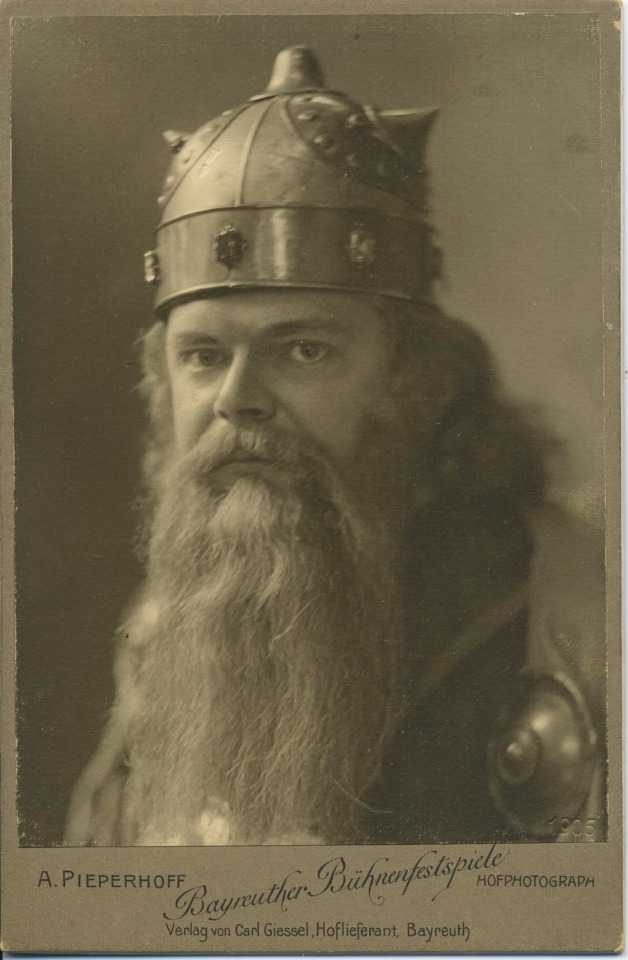

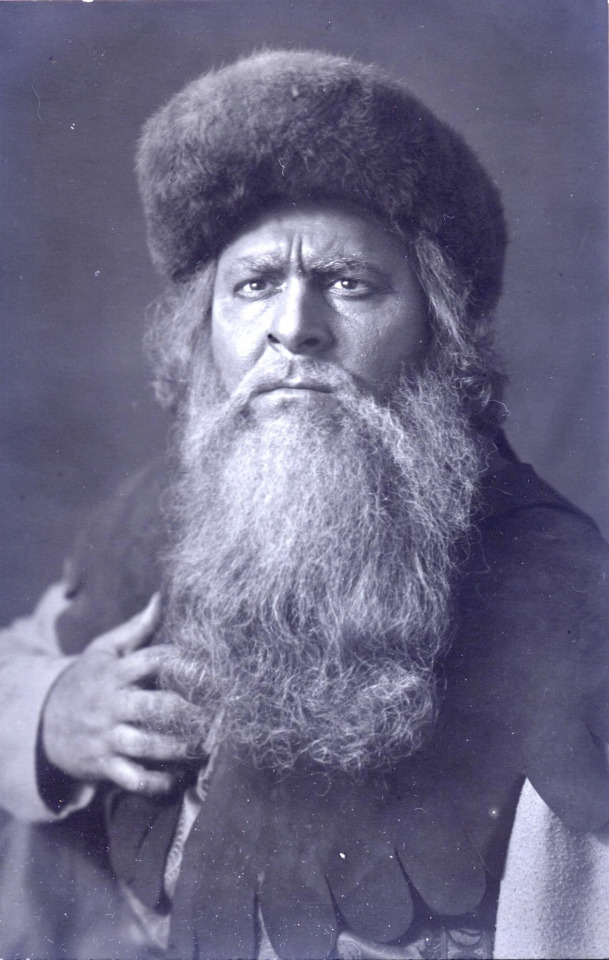


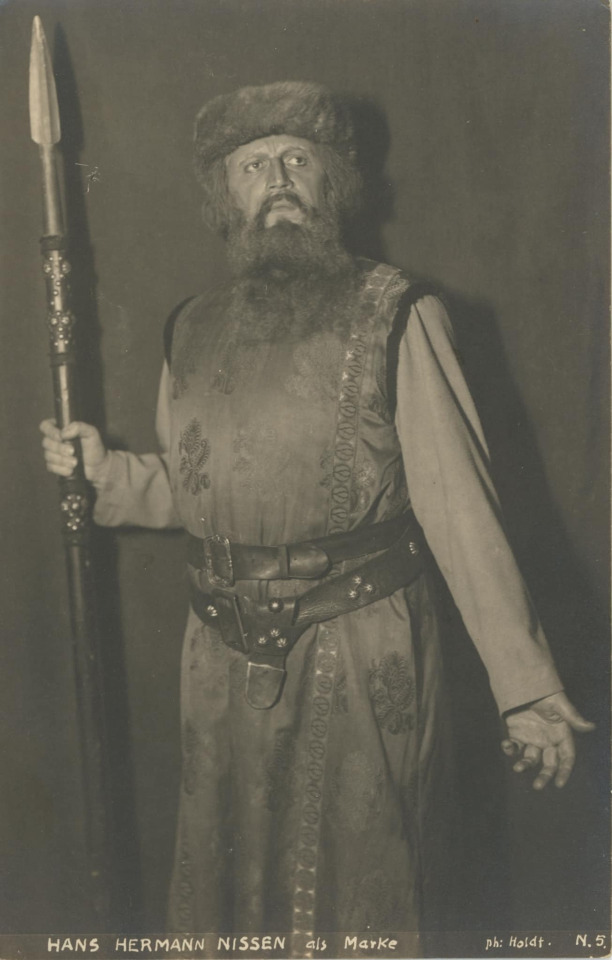
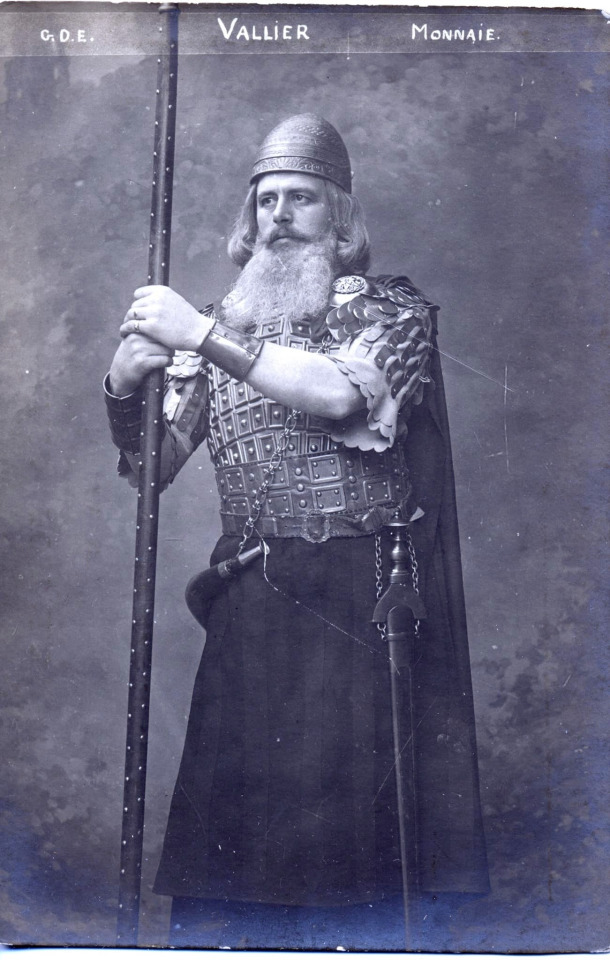

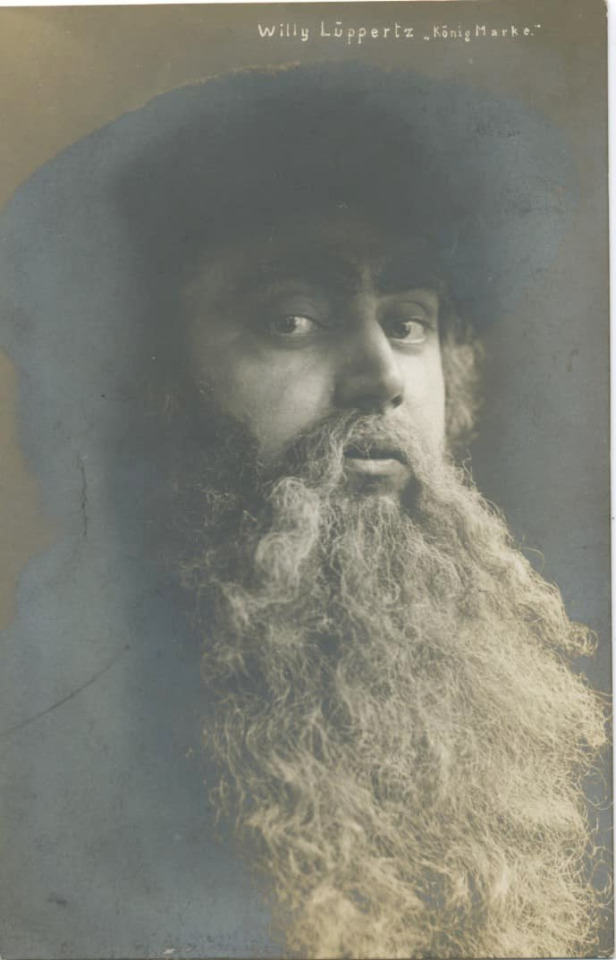

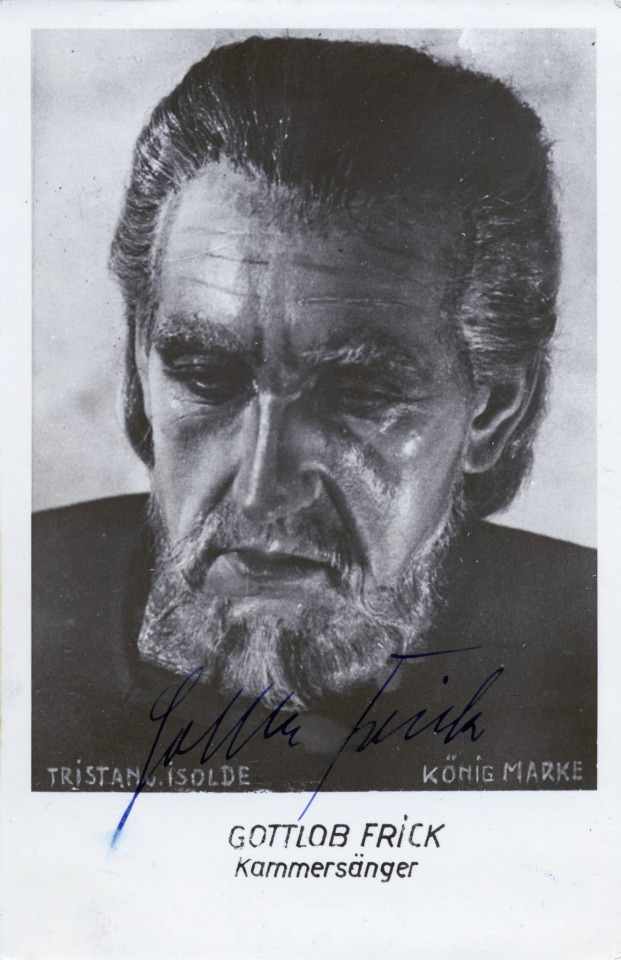
On June 10, 1865, the world premiere of "Tristan and Isolde" by R. Wagner took place in Munich.
„Tot denn alles! Alles tot!“
Here are some of the first basses to have sung the role of King Marke over the years and contributed to the success of this work through their dedication.
Felix von Kraus (October 3, 1870 - October 30, 1937), Austrian dramatic bass.
Paul Bender (28 July 1875 – 25 November 1947), German bass.
Max Gillmann (1874 - 1926), bass.
Theodor Lattermann (1880-1926), German bass-baritone.
Richard Mayr (November 18, 1877 in Henndorf am Wallersee - December 1, 1935 in Vienna), Austrian bass.
Hans Hermann Nissen (May 20, 1893, Danzig - March 28, 1980, Munich), German bass-baritone.
Jean Vallier (? 1863 - Paris 1952), French bass.
Joseph von Manowarda (3 July 1890 in Kraków – 24 December 1942 in Berlin), Austrian bass and Heldenbaritone.
Willy Lüpertz
Alexander Kipnis (February 13 [O.S. February 1] 1891 – May 14, 1978), Russian-born bass.
Gottlob Frick (28 July 1906 in Ölbronn-Dürrn – 18 August 1994 in Muhlacker), German bass.
#opera#classical music#music history#bel canto#composer#classical composer#aria#classical studies#classical#classical musician#classical musicians#classical history#opera history#musicians#musician#classical singing#classical singer#chest voice#maestro#tristan und isolde#tristan and isolde#richard wagner#wagner#historian of music#history#music#opera singer#singing#bass
12 notes
·
View notes
Photo




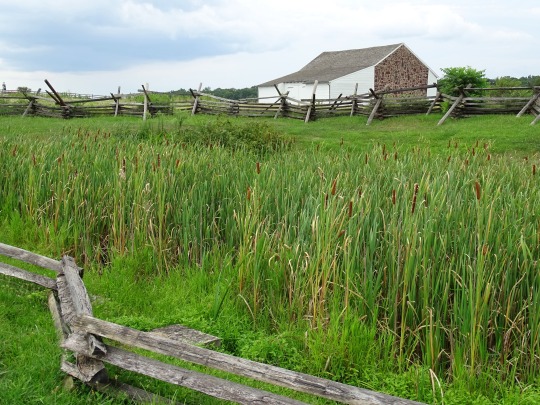

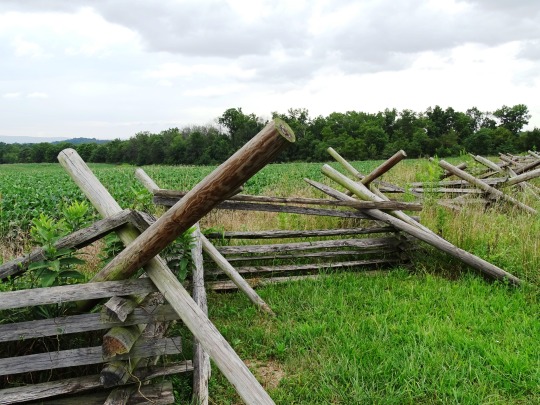



American Civil War: The final day of the Battle of Gettysburg culminated with Pickett's Charge on July 3, 1863.
#High Water Mark of the Rebellion Monument#American Civil War#Pennsylvania#final day#Battle of Gettysburg#Gettysburg National Military Park#vacation#Gettysburg Battlefield Historic District#3 July 1863#anniversary#US history#US Civil War#Devil's Den#John B. Bachelder#snake fence#farm building#architecture#landscape#countryside#original photography#flora#field#woods#Little Round Top
0 notes
Text

LETTERS FROM AN AMERICAN
July 3, 2023
HEATHER COX RICHARDSON
JUL 3, 2023
And on July 4, 1776, the Second Continental Congress adopted the Declaration of Independence, declaring: “We hold these truths to be self-evident, that all men are created equal, that they are endowed by their Creator with certain unalienable rights, that among these are Life, Liberty and the Pursuit of Happiness.”
For all the fact that the congressmen got around the sticky little problem of Black and Indigenous slavery by defining “men” as “white men,” and for all that it never crossed their minds that women might also have rights, the Declaration of Independence was an astonishingly radical document. In a world that had been dominated by a small class of rich men for so long that most people simply accepted that they should be forever tied to their status at birth, a group of upstart legislators on the edges of a continent declared that no man was born better than any other.
America was founded on the radical idea that all men are created equal.
What the founders declared self-evident was not so clear eighty-seven years later, when southern white men went to war to reshape America into a nation in which African Americans, Indigenous Americans, Chinese, and Irish were locked into a lower status than whites. In that era, equality had become a “proposition,” rather than “self-evident.”
“Four score and seven years ago,” Abraham Lincoln reminded Americans, “our fathers brought forth on this continent, a new nation, conceived in Liberty, and dedicated to the proposition that all men are created equal.” In 1863, Lincoln explained, the Civil War was “testing whether that nation, or any nation so conceived and so dedicated, can long endure.”
It did, of course. The Confederate rebellion failed. The United States endured, and Americans began to expand the idea that all men are created equal to include Black men, men of color, and eventually women.
But just as in the 1850s, we are now, once again, facing a rebellion against our founding principle, as a few people seek to reshape America into a nation in which certain people are better than others.
The men who signed the Declaration of Independence on July 4, 1776, pledged their “Lives, [their] Fortunes and [their] sacred Honor” to defend the idea of human equality. Ever since then, Americans have sacrificed their own fortunes, honor, and even their lives, for that principle. Lincoln reminded Civil War Americans of those sacrifices when he urged the people of his era to “take increased devotion to that cause for which they gave the last full measure of devotion—that we here highly resolve that these dead shall not have died in vain—that this nation, under God, shall have a new birth of freedom—and that government of the people, by the people, for the people, shall not perish from the earth.”
Words to live by in 2023.
LETTERS FROM AN AMERICAN
HEATHER COX RICHARDSON
#Heather Cox Richardson#letters from an american#history#all men are created equal#equality#justice#declaration of independence
8 notes
·
View notes
Text


3 July 1863, the high water mark of the constitutional republic.
13 notes
·
View notes
Text
Today is the 160th anniversary of the Battle of Gettysburg. Remember the Fallen. Many of our boys were injured and fell those three days. July 1-3 1863

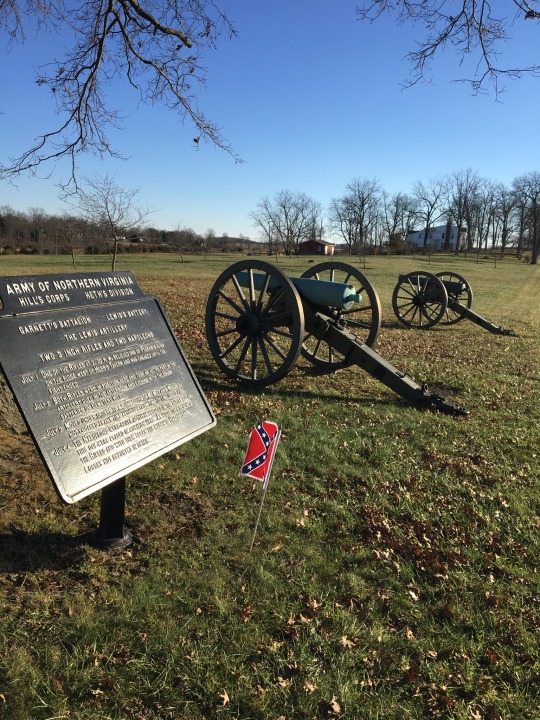


Clean a monument!
#southerners#civil war#gettysburg#states rights#history#robert e lee#gravestones#confederate#confederacy#alabama#virginia#rebel#georgia#black confederate#monument#humanity
7 notes
·
View notes
Text
31 Days of Halloween: Day 13, The Haunted Gettysburg Battlefield
On Day 13 of our 31 days of Halloween journey, we find ourselves at the Gettysburg Battlefield in Pennsylvania, a place steeped in history and ghostly legends. Known as one of the most haunted locations in America, the battlefield retains echoes of the tragic events that unfolded during the Civil War. Prepare to delve into the haunting tales and paranormal encounters that haunt this hallowed ground.
Historical Background
The Battle of Gettysburg, fought from July 1-3, 1863, was a turning point in the American Civil War. Thousands of soldiers lost their lives in the battle, resulting in a massive loss of life and untold suffering. Today, the battlefield serves as a memorial to those who fought and died, and a reminder of America's tumultuous past.
Haunting Tales
The ghostly legends associated with the Gettysburg Battlefield have captured the imaginations of many visitors and paranormal enthusiasts. Here are a few notable haunting tales associated with this historic site:
Devil's Den: This rocky area witnessed intense fighting during the battle. Visitors have reported seeing apparitions of soldiers, hearing phantom gunshots and cries of agony, and feeling an oppressive atmosphere in this haunted hotspot.
The Wheatfield: Considered one of the bloodiest areas during the battle, the Wheatfield is believed to be haunted by the restless spirits of soldiers. Visitors have experienced unexplained cold spots, strange smells, and even sightings of ghostly figures among the tall grass.
The Triangular Field: This area served as a staging ground for Confederate troops during Pickett's Charge. Visitors have reported seeing spectral formations of marching soldiers, hearing phantom drumming, and feeling an overwhelming sense of sadness in this haunted field.
Exploring the Gettysburg Battlefield
Visitors to the Gettysburg Battlefield can embark on guided tours that highlight significant battle sites and share chilling tales of the paranormal. From the famous Devil's Den to Little Round Top and Cemetery Hill, these tours offer a glimpse into the tragic history and ghostly phenomena that permeate the battlefield.
For those seeking a more immersive experience, overnight ghost hunts and paranormal investigations are available. Armed with ghost-hunting equipment, participants can explore the haunted areas of the battlefield, potentially encountering the spirits of soldiers and experiencing unexplained phenomena firsthand.
Conclusion
Day 13 brings us to the hallowed grounds of the haunted Gettysburg Battlefield. As you venture through this historic site, keep an open mind and listen carefully for echoes of the past. The ghostly manifestations and paranormal encounters that permeate these battlefields serve as a potent reminder of the sacrifices made during the Civil War.
Whether you visit during the Halloween season or any time of the year, the Gettysburg Battlefield offers a unique opportunity to connect with history and the ethereal realm. Explore, reflect, and honor the spirits of the fallen as you navigate the haunted tales and lingering spirits of this storied battleground.
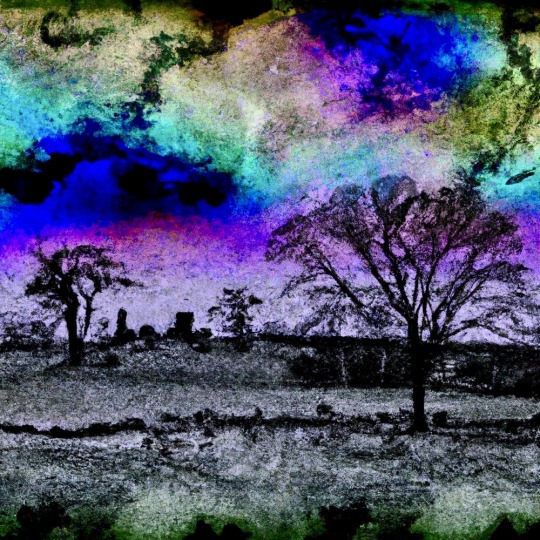
#ko-fi#kofi#geeknik#nostr#art#blog#writing#halloween#all hallows eve#samhain#gettysburg#pennsylvania#haunted#battlefield#ghosts
6 notes
·
View notes
Photo

Fire at the Angle by Dale Gallon - Lt. Alonzo Cushing fires his last round of canister into Pickett’s Division; moments later he is killed and his battery overrun. This was the Angle, the “High Water Mark” at Gettysburg, July 3, 1863 (x)
#american civil war#civil war#us civil war#dale gallon#alonzo cushing#history#unconditional queue#acw
63 notes
·
View notes